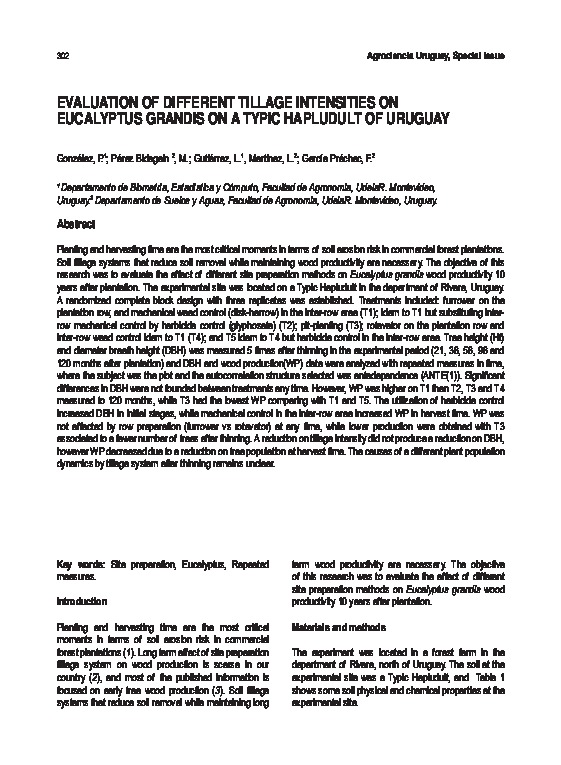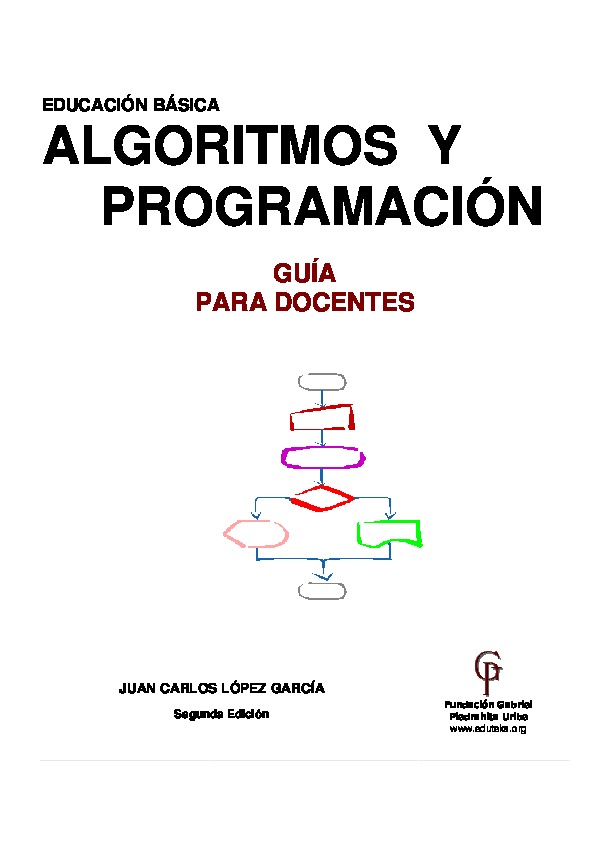Textos
Texto

Evaluation of different tillage intensities on Eucalyptus grandis on a typic hapludult of Uruguay
Descripción
Planting and harvesting time are the most critical moments in terms of soil erosion risk in commercial forest plantations. Soil tillage systems that reduce soil removal while maintaining wood productivity are necessary. The objective of this research was to evaluate the effect of different site preparation methods on Eucalyptus grandis wood productivity 10 years after plantation. The experimental site was located on a Typic Hapludult in the department of Rivera, Uruguay. A randomized complete block design with three replicates was established. Treatments included: furrower on the plantation row, and mechanical weed control (disk-harrow) in the inter-row area (T1); idem to T1 but substituting interrow mechanical control by herbicide control (glyphosate) (T2); pit-planting (T3); rotavator on the plantation row and inter-row weed control idem to T1 (T4); and T5 idem to T4 but herbicide control in the inter-row area. Tree height (Ht) and diameter breath height (DBH) was measured 5 times after thinning in the experimental period (21, 38, 58, 98 and 120 months after plantation) and DBH and wood production(WP) data were analyzed with repeated measures in time, where the subject was the plot and the autocorrelation structure selected was antedependence (ANTE(1)). Signifi cant differences in DBH were not founded between treatments any time. However, WP was higher on T1 than T2, T3 and T4 measured to 120 months, while T3 had the lowest WP comparing with T1 and T5. The utilization of herbicide control increased DBH in initial stages, while mechanical control in the inter-row area increased WP in harvest time. WP was not affected by row preparation (furrower vs rotavator) at any time, while lower production were obtained with T3 associated to a fewer number of trees after thinning. A reduction on tillage intensity did not produce a reduction on DBH, however WP decreased due to a reduction on tree population at harvest time. The causes of a different plant population dynamics by tillage system after thinning remains unclear.
González, P. et al. (2012) Evaluation of different tillage intensities on Eucalyptus grandis on a typic hapludult of Uruguay. Agrociencia, 16(3), pp. 302-305.
Categorias:
Colecciones:
Recuerda
La cultura y la educación necesitan de tu apoyo activo.
Información del autor

ACUEDI
ACUEDI son las siglas de la Asociación por la Cultura y Educación Digital. Somos una asociación civil sin fines de lucro, con sede en Lima (Perú), fundada en noviembre del 2011. Nuestro principal objetivo es incentivar la lectura y la investigación académica, especialmente dentro de espacios digitales. Para ello hemos diseñado una serie de proyectos, todos ellos relacionados entre sí. Este es nuestro proyecto principal, nuestra Biblioteca DIgital ACUEDI que tiene hasta el momento más de 12 mil textos de acceso gratuito. Como tenemos que financiar este proyecto de algún modo, ya que solo contamos con el apoyo constante y desinteresado de la Fundación M.J. Bustamante de la Fuente, hemos creado otros proyectos como ACUEDI Ediciones, donde publicamos libros impresos y digitales, y la Librería ACUEDI, donde vendemos libros nuestros y de editoriales amigas ya sea mediante redes sociales, mediante esta plataforma, en eventos o en ferias de libros.ACUEDI



